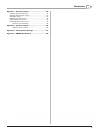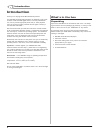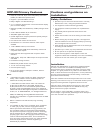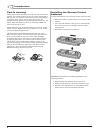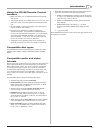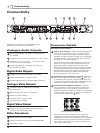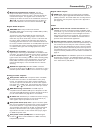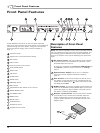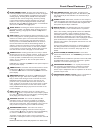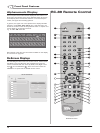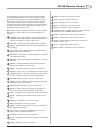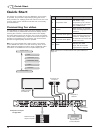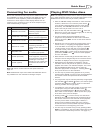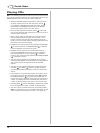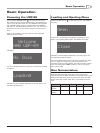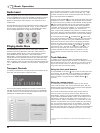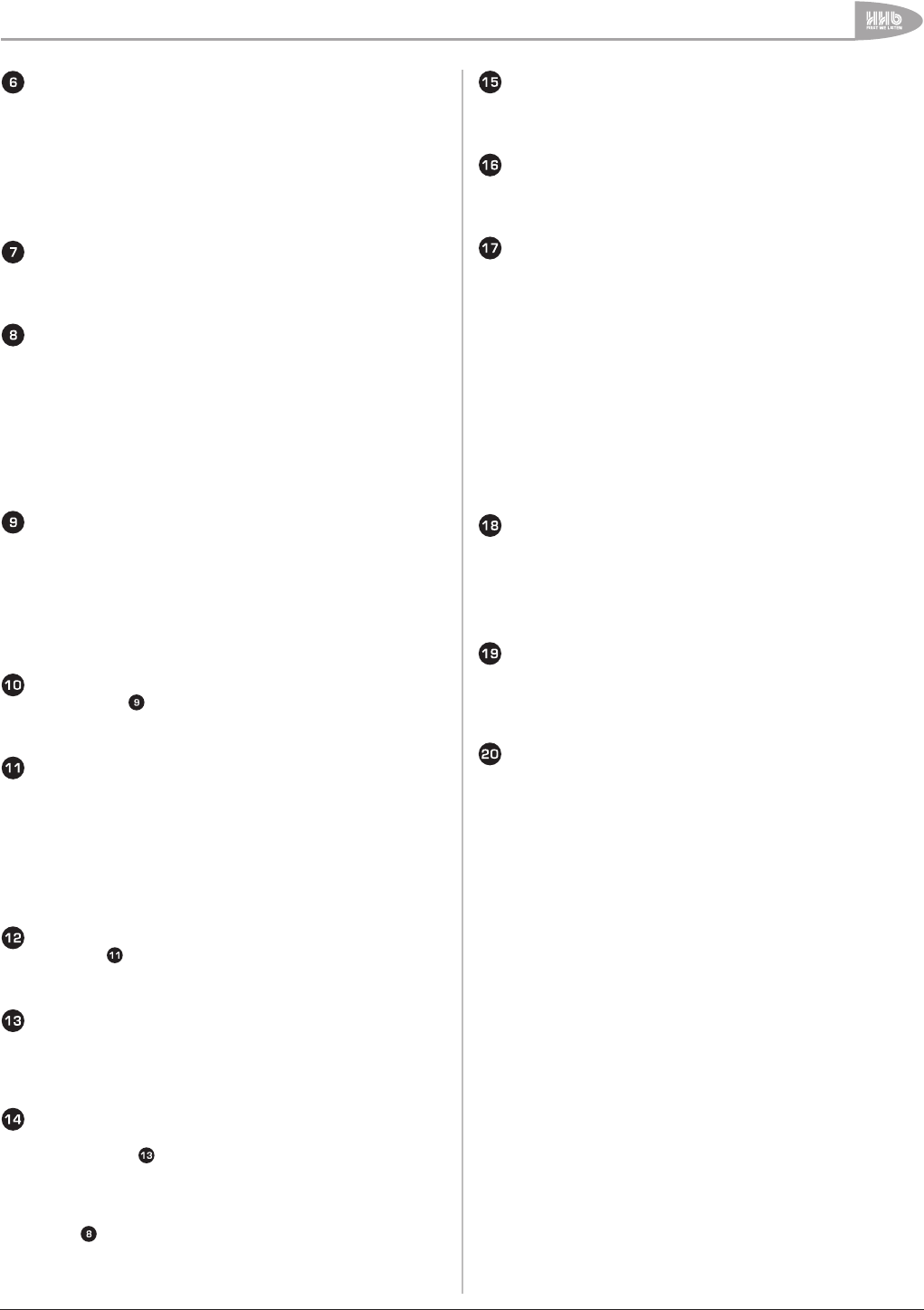
Front Panel Features
13
UDP-89 User Manual Version 2.0 www.hhb.co.uk
PLAY/PAUSE button. Pressing this button starts or
resumes playback of the inserted disc if the disc is stopped
or paused, or pauses playback if pressed when the disc is
already playing. Pressing PLAY/PAUSE from Stop Mode
restarts the disc from the beginning, whereas pressing
it from Resume Mode continues playback from the last
location. The front panel display will either indicate Play
Mode with the word Play and the H symbol, or Pause Mode
with the word Pause and the B symbol.
STOP button. Pressing this button stops the disc from
all transport modes. The display either will show the word
Resume, following a single press of STOP, or Stop after a
second press.
CUE button. This accesses the player’s bookmark or cue-
point locating feature. Pressing CUE in Play or Pause modes
allows a cue-marker point to be stored with the MARK/
ENTER button. Once a marker point has been stored, a
second press on the MARK/ENTER button will locate to
the stored location and exit the bookmarking feature. In
addition, the stored cue-marker may be cleared using the
CLR button on the remote control, or the LEFT or RIGHT
cursor buttons on the front panel. Pressing CUE a second
time will exit the function. See page 27 for full details.
FFWD button. Pressing this button from Play or Pause
Modes puts the unit into a Search function, causing the disc
to be scanned at 2x normal speed in a forward direction.
Further presses of FFWD double the previous search
speed, up to a maximum of 16x normal speed. Audio is
muted in Search.
FWD Search is indicated by FFWD and the speed multiple in
the front panel display.
FREW button. This button has the same function as the
FFWD button above, except that the search direction
is reversed. REW Search is indicated by FREW in the front
panel display.
PREVIOUS button. The function of PREVIOUS varies
slightly with disc type. With CDs or SACDs, if pressed in
Play or Pause mode during the first 5 seconds of a track,
PREVIOUS causes the disk to jump to the start of the
previous track. If pressed after the first 5 seconds of a
track, it will jump to the start of the current track. In either
case, playback commences from the new location. With
DVDs, PREVIOUS will always jump back to the start of the
current chapter.
NEXT button. This button works in a similar way to
PREVIOUS above, except that the track/chapter jumped
to is the one following that currently playing. Pressing NEXT
while playing the last track has no effect.
CURSOR controls. The normal UP, DOWN, LEFT
and RIGHT cursor controls are provided for navigating
the various on-screen menus generated by the player or
authored onto video discs. LEFT and RIGHT cursor controls
also provide front panel cue-point CLEAR functionality.
MARK/ENTER button. This button has several
functions. When navigating on-screen menus using the
cursor buttons above, the button acts as an ENTER key,
to confirm a selected menu option or track selection.
The button is also used to mark a point in programme
material for subsequent location in conjunction with the CUE
button
.
MARK/ENTER also initiates disk playback from STOP mode.
TOP MENU button. With DVDs, cancels current
transport mode and displays disc’s main Disc Menu. (NB
this will generally be the Title Menu on discs with only a
single Title)
MENU button. With DVDs, cancels current transport
mode and displays the Title Menu for the currently-selected
Title. The MENU button also enables PBC navigation with
VCD (Video CD) and Super VCD discs.
SETUP button. The SETUP button has two functions,
depending whether a disc is loaded when it is pressed.
With a disc loaded, pressing SETUP enters the UDP-89’s
internal menu system, which provides a range of user-
selectable options and additional operating modes. These
are described in detail later in the manual (see page 38).
The drive enters Resume Mode if a disc is playing. A second
press of SETUP from anywhere in the menu structure
exits the menu system; disc playback will resume from the
previous location.
A long press on SETUP (more than ½ second) without a
disc being loaded allows re-assignment of the UDP-89’s
Parallel remote control connector. See page 42 for full
details.
AUTO-PAUSE (A-PAUSE) button. This button
selects Auto-Pause Mode. The A.PAUSE flag illuminates in
the display.
Auto-Pause Mode modifies the operation of the CUE, NEXT
and PREVIOUS functions; these are described in greater
detail later in the manual (see page 27)
HEADPHONE SOCKET. A ¼” 3-pole jack socket for
the connection of headphones for monitoring purposes.
The signal available at this connector is the main L+R
stereooutput.Headphoneswithanimpedanceof32ohms
upwards may be used.
HEADPHONE LEVEL control. This is a conventional
analogue volume control for the headphone output.



